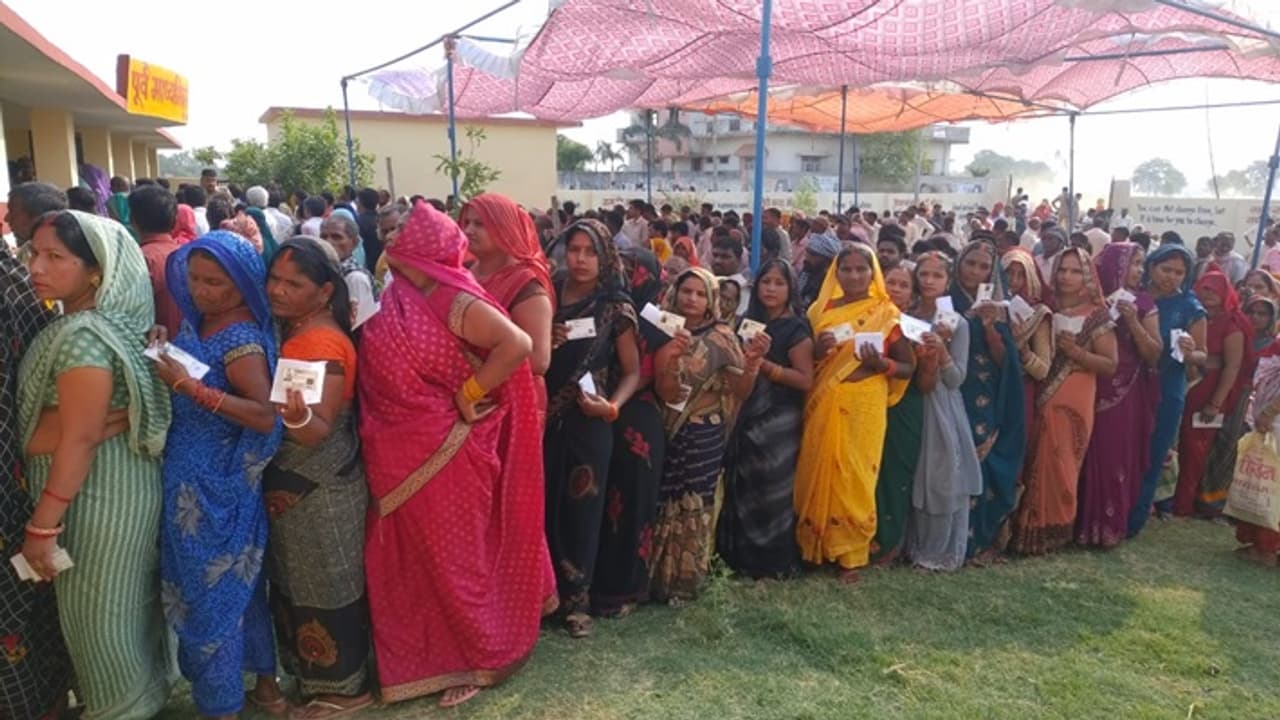Caste equations are the key to power in Bihar elections 2025. RJD is dependent on MY equation, NDA is dependent on upper caste-EBC and JDU is dependent on Luv-Kush vote bank. The final victory will be decided only by successful social alliance.
Patna: With the announcement of the dates of Bihar Assembly elections 2025, the temperature of caste equations in the politics of the state has increased rapidly. The Election Commission has announced that voting will be held in two phases on November 6 and 11, while counting of votes will be done on November 14. Now the question is not which party will form an alliance with whom, the question is who will solve the caste mathematics of Bihar, which, like every time, is going to be the key to reaching power this time too.
Caste is the backbone of Bihar politics
Politics of Bihar is considered incomplete without caste based social equations. Here only development or issues do not matter, caste identity and social representation decide the basis of real votes. It was clearly visible in the 2020 assembly elections that no party can win the election on the basis of one caste or community to get majority. Therefore, this time also the entire strategy of every party is based on the formula of whom to add and whom not to lose.
Yadav and Muslim votes, RJD’s unbreakable base
Yadavs constitute about 14.3% of the population in Bihar and have been the most loyal voters of Rashtriya Janata Dal (RJD) for decades. Lalu Prasad Yadav gave political power to this community, and now his son Tejashwi Yadav is carrying forward the same legacy. Yadav votes are easily transferred not only to RJD but also to the allies of the Grand Alliance. When about 17.7% Muslim votes are added to this, the “MY equation” is formed which kept the power of Bihar in the hands of RJD for a long time. Even in 2025, this alliance is the strongest vote bank of the Grand Alliance.
Upper caste vote, NDA’s unshakable fort
Brahmin, Bhumihar, Rajput and Kayastha castes constitute about 15.5% of the total population of Bihar. This group has been economically, educationally and socially influential. When the politics of backward castes became dominant during Lalu Raj, the upper castes distanced themselves from the Congress and joined the Bharatiya Janata Party (BJP). Even today, the core vote bank of BJP is the upper caste community. Even though their numbers are less than Yadavs or Muslims, this community is organized, vocal and decisive, especially in urban areas and on seats where the contest is close.
The basis of Nitish Kumar’s ‘Luv-Kush’ equation
The Kurmi and Kushwaha castes together constitute about 7.1% of the population of Bihar. Nitish Kumar had laid the foundation of JDU by strengthening this social alliance. Nitish, who comes from the Kurmi caste, along with Kushwaha leaders (like Upendra Kushwaha) had named this alliance as ‘Luv-Kush equation’. This formula remained the guarantee of JDU’s power for many years. However, now with Samrat Chaudhary (Kushwaha) becoming the Deputy CM, this equation seems to be leaning towards BJP also.
Paswan-Dusadh vote Chirag Paswan’s ‘kingmaker’ power
Paswan and Dusadh community have the strongest hold on Dalit votes. This group constitutes about 5% of the total population and was the base of Ram Vilas Paswan’s Lok Janshakti Party (LJP) for a long time. In 2020, Chirag Paswan had caused huge loss to JDU by contesting the elections alone, which proved that LJP’s vote bank is still decisive.
Strength of Musahar, Ravidas and other Dalit votes, Manjhi and Left parties
The Musahar community (about 3.1%) and the Ravidas/Chamar community (5%) are among the poorest and most marginalized castes of Bihar. A large part of them remains with Jitan Ram Manjhi’s party HAM. At the same time, the influence of CPI-ML and Left parties also remains in some areas among these castes. Maintaining their votes for the Grand Alliance is as important as handling the MY equation.
Vaishya vote, BJP’s new hope
The Vaishya community (which includes EBC sub-castes like Teli and Kanu), which constitutes 13% of Bihar’s population, has traditionally been with the BJP. Prime Minister Modi’s “extremely backward” card and politics of economic empowerment have brought this community closer to the NDA. These votes prove to be decisive in urban seats, especially in areas like Patna, Gaya, Bhagalpur and Muzaffarpur.
AIMIM and Muslim factor of Seemanchal
In the last elections, Asaduddin Owaisi’s party AIMIM surprised everyone by winning five seats in Seemanchal region. But it seems difficult to repeat this in 2025 because this time RJD is making every possible effort to prevent the scattering of Muslim votes. If Muslim votes remain united in Seemanchal, then the Grand Alliance can get a big advantage.
Bihar’s power will be decided not just by caste but by alliance.
Bihar elections 2025 are certainly a test of caste mathematics, but it is equally true that without social manipulation no party can reach the gates of power. RJD is relying on its MY equation, NDA is playing bets on upper caste and EBC, while parties like JDU and HAM are trying to maintain their regional caste networks.
